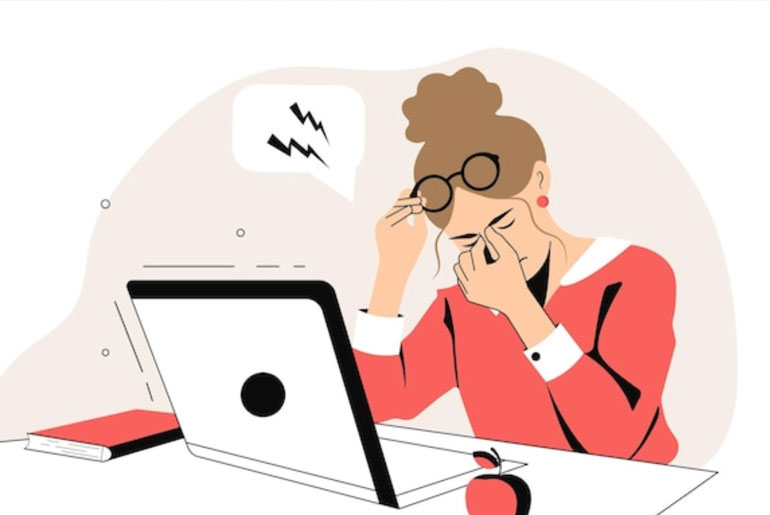As screens become more ingrained in our daily lives, digital eye strain has become a growing concern. Health experts emphasize the importance of managing the impact of prolonged screen time to mitigate potential negative effects on eye health. In today’s fast-paced world, where screens are ubiquitous, whether for work on computers, social media scrolling on smartphones, or watching favorite shows on tablets, the time spent in front of screens has significantly increased.
To address digital eye strain, experts suggest adopting effective tips and strategies to minimize its impact. These may include practicing the 20-20-20 rule (taking a 20-second break to look at something 20 feet away every 20 minutes), adjusting screen brightness and contrast, ensuring proper ergonomics, using artificial tears to lubricate the eyes, and considering blue light filters or glasses. By incorporating these measures into daily routines, individuals can better manage the potential adverse effects of increased screen exposure on their eye health.
Digital eye strain, also referred to as computer vision syndrome, encompasses various eye and vision-related problems that arise from prolonged use of digital devices. Symptoms can include headaches, eyestrain, blurred vision, and dry eyes, among others. As our dependence on screens continues to escalate in today’s digital age, it becomes increasingly crucial to implement strategies to effectively manage and reduce the impact of digital eye strain on our overall well-being.
Tips to manage the impact of screen time:
1. Follow the 20-20-20 Rule:
As you’ve mentioned, take a 20-second break every 20 minutes and focus on something 20 feet away. This helps reduce eye strain and keeps your eyes refreshed.
2. Adjust Screen Settings:
Ensure your screen brightness is similar to your surroundings. Avoid excessively bright or dim screens. Use the night mode feature in the evening to reduce exposure to blue light, which can affect sleep patterns.
3. Blink Regularly:
Consciously blink more often to prevent dry eyes. Extended screen time tends to reduce the natural blink rate, leading to dryness and discomfort. If necessary, use artificial tears or lubricating eye drops.
4. Eye Exercises:
Incorporate simple eye exercises into your routine to improve flexibility. Rotate your eyes in a circular motion, focus on near and far objects alternately, or try palming – covering your eyes with your palms for a few minutes.
5. Optimize Screen Ergonomics:
Position your screen at eye level, about an arm’s length away. Ensure your chair provides proper support, and your feet are flat on the floor. This helps maintain good posture and reduces strain on your neck and back.
6. Use Blue Light Filters:
Consider using blue light filters or apps on your devices, especially during the evening. Blue light emitted by screens can disrupt sleep patterns, and reducing exposure can promote better sleep.
7. Digital Detox:
Schedule regular breaks from screens. Engage in activities that don’t involve screens, such as going for a walk, reading a physical book, or practicing a hobby.
8. Stay Hydrated:
Maintain proper hydration levels by drinking enough water throughout the day. Dehydration can contribute to dry eyes, so staying hydrated is essential for eye health.
9. Adjust Font Size and Contrast:
Ensure text on screens is easy to read. Adjust font sizes and contrast settings to reduce the strain on your eyes when reading or working on digital devices.
10. Consider Anti-Glare Screens or Filters:
Anti-glare screens or filters can help reduce reflections and glare, making it more comfortable for your eyes to focus on the screen.
11. Regular Eye Check-ups:
Schedule regular eye examinations to monitor your eye health and address any vision issues promptly.
Remember, it’s essential to be mindful of your screen time and prioritize eye health. If you continue to experience discomfort or vision problems, consult with an eye care professional for personalized advice and solutions.
Disclaimer:
The information contained in this article is for educational and informational purposes only and is not intended as a health advice. We would ask you to consult a qualified professional or medical expert to gain additional knowledge before you choose to consume any product or perform any exercise.








